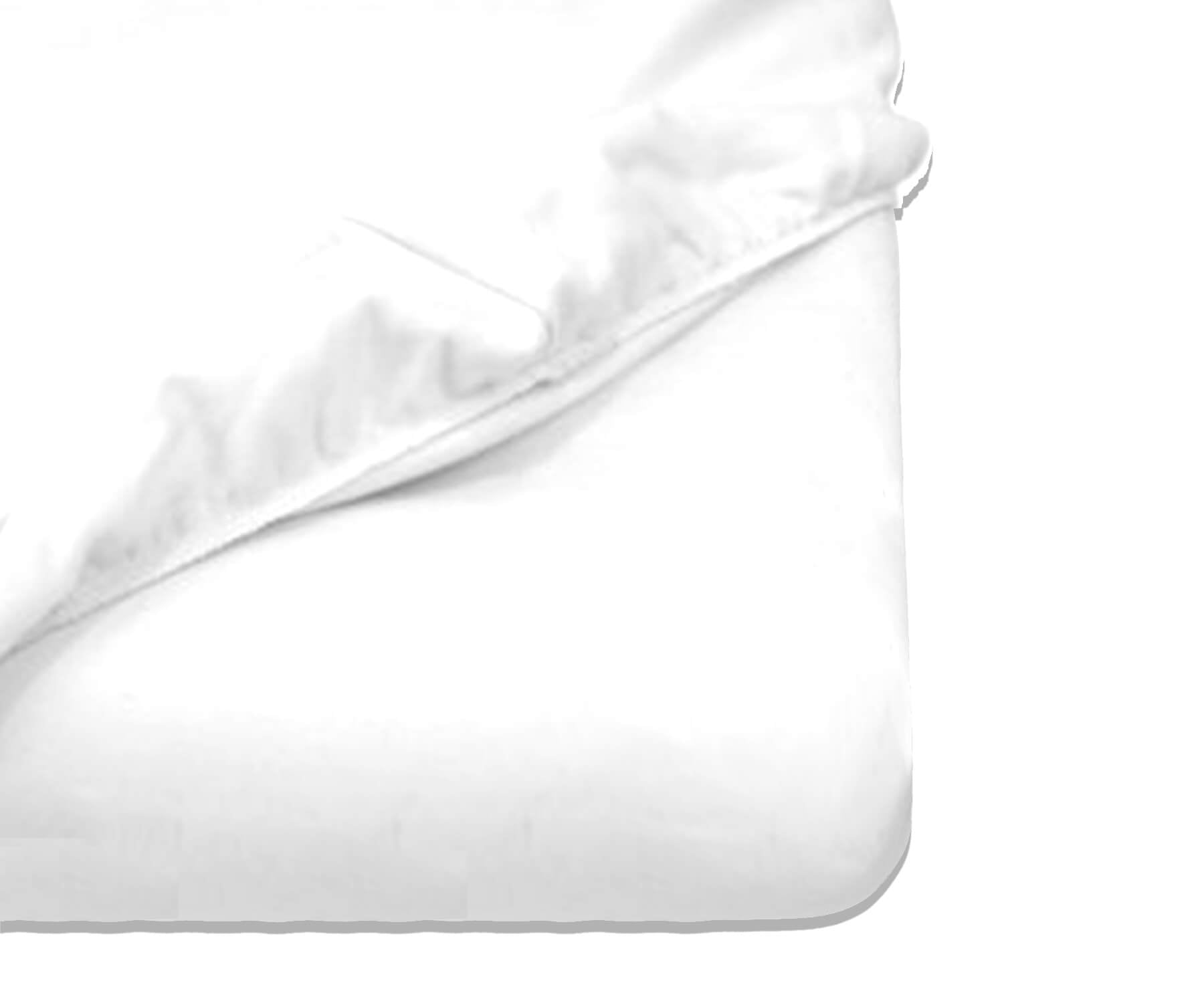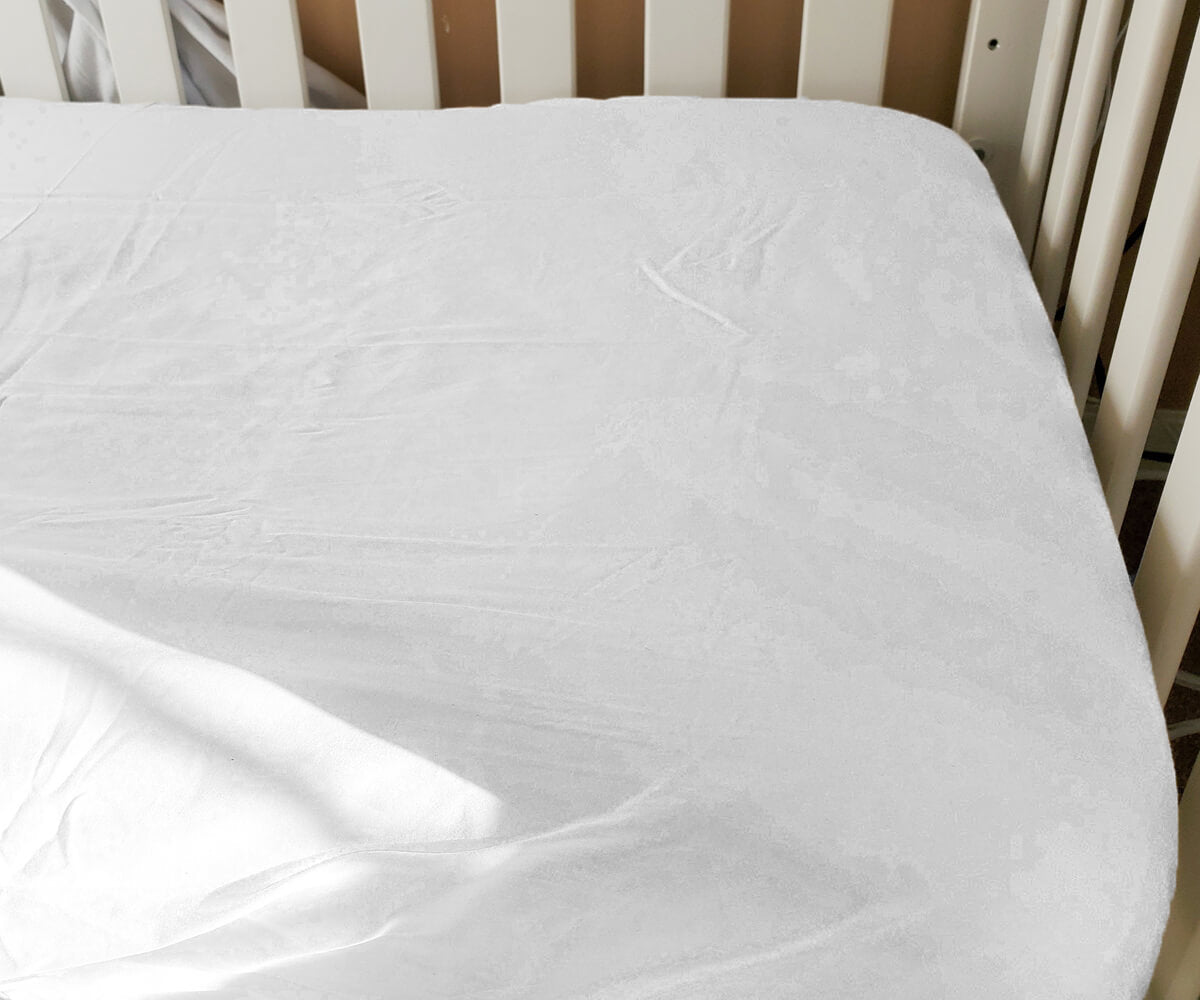Why Bedding Order Matters
Before getting into the steps, it’s important to understand why the order of your bedding matters. Layering your bed sheets and pillowcases correctly not only improves comfort but also protects your mattress from dirt and allergens. It helps your bedding last longer and keeps your bed looking neat and well-made. Plus, following the right order makes cleaning and changing your sheets much easier.
Step 1: Start with the Mattress Protector
The first item to go on your bed is the mattress protector. It’s an often-overlooked part of bedding, but a crucial one. A mattress protector creates a barrier between your mattress and the sheets, safeguarding it against spills, dust mites, and allergens. It also adds an extra layer of comfort, especially if you have a thin mattress.

Make sure the mattress protector is snugly fitted around your mattress to prevent it from bunching up underneath your sheets. Many mattress protectors come with elastic edges, which make them easier to secure.
Also Read: 7 No-Fuss (But Pretty) Ways to Set a Table for Thanksgiving
Step 2: The Fitted Sheet
Next comes the fitted sheet, which is designed with elastic corners to grip your mattress. The fitted sheet is the base layer of your bedding and plays a vital role in keeping you comfortable during the night. To place it properly:
- Start by matching one corner of the fitted sheet to a corner of your mattress.
- Tuck the elastic edges under the mattress.
- Pull the remaining sheet across and tuck the other corners in.
When placed correctly, the fitted sheet will stay in place and won’t shift as you sleep. This layer is essential as it provides a soft surface to lay on and protects the mattress from direct contact with your skin.
Step 3: The Flat Sheet
Once your fitted sheet is in place, it's time to add the flat sheet (also known as the top sheet). This sheet sits between you and the blanket, providing an additional layer of comfort and cleanliness. When putting on the flat sheet:

- Lay the sheet evenly over the mattress, making sure the printed or finished side faces downward.
- Align the top of the sheet with the top edge of the mattress.
- Leave enough overhang on the sides and foot of the bed to tuck in.
Tuck the sheet neatly under the mattress at the foot of the bed, then fold in the corners to create hospital corners. This step is optional but gives your bed a crisp and hotel-like look.
Read More: Gift Guides 2024 - Best Gift Ideas for Any Occasion
Step 4: Adding a Blanket or Comforter
With your sheets in place, it's time to add a blanket or comforter. This layer is all about warmth and coziness. The size and type of blanket or comforter you choose depend on your climate and personal preference. Lighter blankets are perfect for warmer climates, while heavier comforters work best in cooler weather.
To put on your comforter:
- Spread the blanket or comforter evenly across the bed.
- Ensure it’s centered, with equal overhang on both sides.
- Tuck the bottom of the comforter under the foot of the bed for a clean finish, or leave it hanging loose for a relaxed look.
Step 5: Pillowcases
Now that your bed sheets and comforter are in place, it’s time to move on to the pillowcases. Pillowcases serve as both protection for your pillows and a decorative element. Here's the correct way to put them on:
- Grab your pillow and fold it slightly in half lengthwise.
- Slide it into the pillowcase, starting with one corner and working your way across.
- Smooth out any wrinkles once the pillow is fully inside.
If you have decorative pillow shams, place them over your standard pillows for a more polished look.
Step 6: Decorative Elements
Once your basic bedding layers are complete, you can add decorative elements to elevate the look of your bed. Throw blankets, accent pillows, and bed runners can all be used to add texture, color, and style to your room. These items aren’t necessary for comfort but help create a luxurious and inviting bed.
- Fold a throw blanket across the foot of the bed for a cozy feel.
- Add a few decorative pillows in various shapes and sizes to create dimension.
- Use a bed runner for a formal, hotel-like appearance.
Read Related: Maximalist Christmas Decorating Ideas for your Table That Prove More is More
Practical Tips for Bedding Care
Now that you know how to make the perfect bed, here are a few practical tips for maintaining your sheets and pillowcases:

- Wash Bedding Regularly: Sheets and pillowcases should be washed every one to two weeks. This keeps them fresh, removes allergens, and helps them last longer.
- Rotate Bedding: Having multiple sets of sheets allows you to rotate them, reducing wear and tear. It also means you won’t have to rush laundry day!
- Store Bedding Properly: When not in use, store clean sheets and pillowcases in a cool, dry place. This prevents mold and mildew buildup.
How to Choose the Right Bedding Materials
When shopping for bed sheets and pillowcases, the material is just as important as the color and style. Here are a few common fabric types to consider:
- Cotton: A popular and breathable option, cotton sheets are soft and durable. Look for organic cotton sheets if you prefer eco-friendly options.
- Linen: Known for its coolness, linen is perfect for hot sleepers or warmer climates.
- Microfiber: This synthetic material is soft and budget-friendly, though it may not be as breathable as natural fabrics.
- Bamboo: A sustainable choice, bamboo sheets are breathable, eco-friendly, and naturally hypoallergenic.

At All Cotton and Linen, you can find a wide selection of bed sheets, pillowcases, and even kitchen towels, table linens, cloth napkins, and sustainable grocery bags. Their products are made with organic and eco-friendly materials, offering both comfort and sustainability. Whether you’re looking to refresh your bed or kitchen, their options provide high-quality and environmentally friendly solutions.
Creating a Sustainable Bedding Routine
Incorporating sustainable practices into your bedding routine is easier than you think. Simple changes, like opting for organic cotton sheets, can make a big impact on the environment. Here are some ways to make your bedding routine more eco-friendly:
- Choose Organic Materials: Organic cotton and bamboo are great alternatives to conventional fabrics. They require fewer pesticides and chemicals to produce, making them better for the planet and your skin.
- Wash in Cold Water: Washing your bedding in cold water reduces energy consumption and extends the life of your fabrics.
- Air-Dry When Possible: Line-drying your sheets and pillowcases helps preserve the fabric’s integrity and reduces your energy usage.
By making these small adjustments, you can enjoy a comfortable and sustainable night’s sleep.
Bedding Essentials for Every Season
Lastly, it’s essential to rotate your bedding according to the season. During colder months, you may want to layer with heavier comforters and blankets. In warmer months, lighter sheets and breathable fabrics will keep you cool. Here's a quick guide:
- Winter: Layer with flannel sheets, thick comforters, and warm blankets.
- Summer: Stick to lightweight cotton or linen sheets, and swap heavy comforters for a thin blanket or duvet.
Having the right bedding for each season ensures that you stay comfortable year-round, no matter the temperature.
Putting on sheets and pillowcases in the correct order might seem like a small detail, but it makes all the difference for your comfort and the longevity of your bedding. By following the simple steps outlined above, you’ll create a bed that’s not only visually appealing but also a dream to sleep in. Plus, with sustainable options available from All Cotton and Linen, you can enhance your home while making eco-conscious choices.
























